What's right for me?
- Home
- Hormonal Coil / IUS
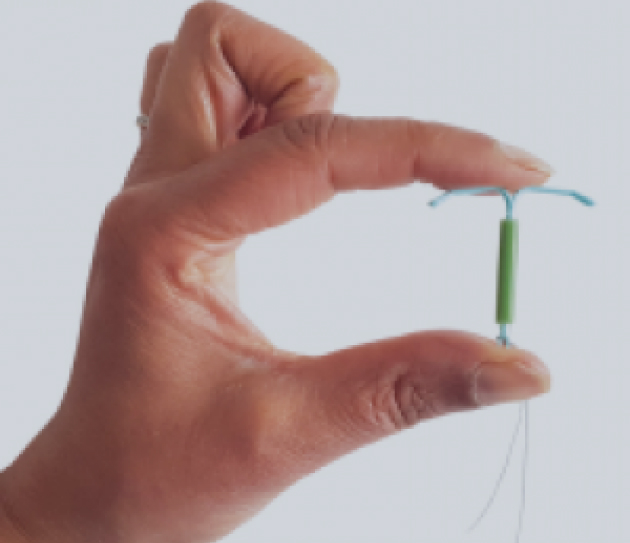
Hormonal Coil / IUS
The hormonal coil (or IUS) is made of plastic and releases a small amount of progestogen hormone which is similar to one of the body's own hormones.
It's put into the womb by a doctor or nurse and lasts up to 6 years.
The IUS can be wonderful in helping heavy or painful periods.
What You Will Get
Positives
Lasts up to 8 years
No need to remember pills or patches
It doesn’t interrupt sex
Extremely good at preventing pregnancy
Periods are usually lighter and less painful
Low level of a very safe hormone
Often suitable for people who can't take estrogen
It's usually quick and easy to take out
Suitable for any age
Negatives
Having an IUS fitted can be painful
Some have irregular bleeding
The IUS can come out (1 in 20 users)
STI check needed before putting it in
No protection against STIs
Sometimes mood changes, skin problems or breast tenderness
Rare risks:
IUS through the wall of the womb when it's put in (fewer than 2 in 1000)
Pregnancy outside the womb (ectopic pregnancy) - possible but very rare
The IUS is great if pills are a nuisance to remember
It lasts up to 6 years, and is not affected by other medicines, vomiting or diarrhoea
The IUS has the lowest level of hormone of all the hormonal methods of contraception
The IUS does not cause infertility
Fertility returns to normal after having the IUS taken out. It’s important to know that it’s less easy to get pregnant as you get older – it’s naturally harder to get pregnant over the age of 35 (although this can definitely still happen!). Find out more about infertility here
Partners won’t usually feel the IUS during sex
Some partners do notice the threads during sex, but the threads can be trimmed so they are out of the way
The IUS can be kept secret since it’s right inside the womb
The body doesn't need a period once a month
The IUS stops the lining of the womb from building up and the womb lining stays thin – blood doesn’t build up inside, and it can help people feel more energetic if they are not losing iron each month in a period. Find out more about periods here
Many people use the IUS for its benefits even if they don't need it for contraception
It can be fantastic for period pain and lighter periods. It can be used to treat these symptoms in Endometriosis.
The IUS can also be used as the progesterone part of Hormone Replacement Therapy (HRT).
The IUS can come out especially after periods in the first three months (1 in 20 users)
It’s important to check the threads (feeling for them inside the vagina after every period)
Good to know
The IUS (Intra-Uterine System) usually makes periods lighter, shorter and less painful. Some will have no periods at all, especially if they have been using it for a while.
Some people get irregular bleeding which is not harmful but can be a nuisance – it’s worth seeking advice if this happens.
The IUS can be painful to put in, but is usually easy to take out.
How much effort is the IUS?
The IUS is put in by a doctor or nurse. It takes about 15 to 20 minutes to put in.
The fitting can be painful, and it’s common to have some pain and bleeding for a few days after.
It’s important to make sure you are not already pregnant when it’s put in. Clinics will advise about this. Find out more about where to get an IUS here
Once fitted, the IUS is effective for between 3 and 6 years, depending on the type.
How effective is the IUS?
The IUS is more than 99% effective – if 100 people use it for a year, less than one will have an unplanned pregnancy.
How does it work?
The IUS releases a small amount of progestogen hormone which thickens the fluid around the neck of the womb (which stops sperm getting to an egg), and makes the lining of the womb thinner so that a fertilised egg can’t settle and grow.
Does the IUS affect my risk of getting cancer?
The IUS releases a small amount of progestogen hormone which thickens the fluid around the neck of the womb (which stops sperm getting to an egg), and makes the lining of the womb thinner so that a fertilised egg can’t settle and grow.
How effective is it?
Using copper coils (IUD), typically fewer than 1 in 100 will get pregnant in one year.
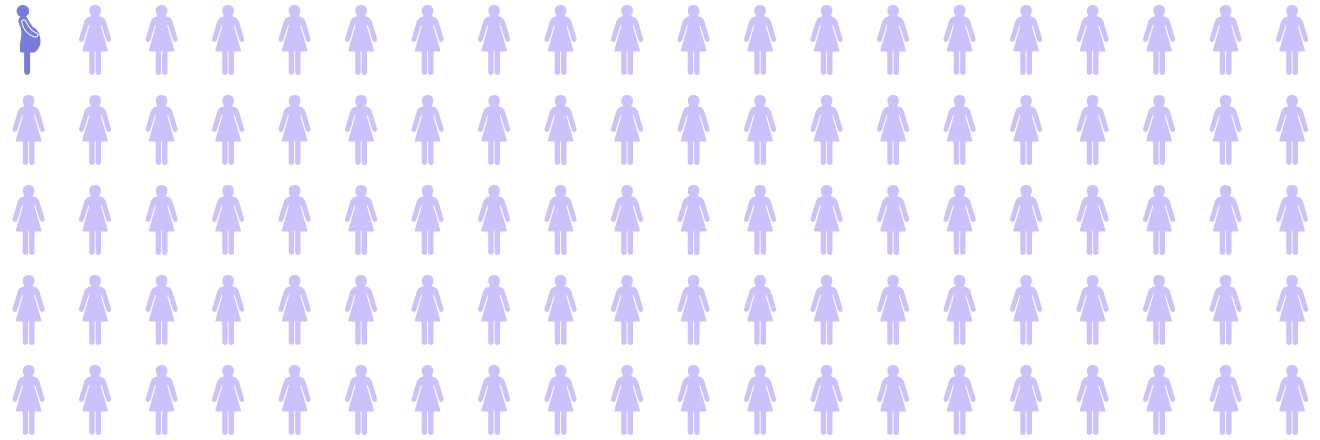
Using mini-pills, typically 9 in 100 will get pregnant in one year.
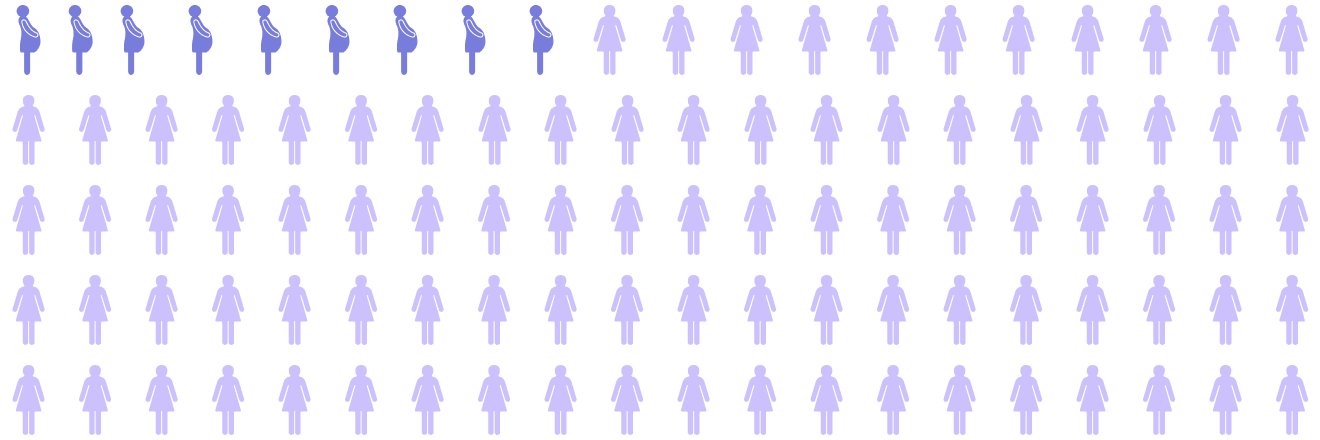
Using the implant, typically fewer than 1 in 100 will get pregnant in one year.

Using hormone coils (IUS), typically fewer than 1 in 100 will get pregnant in one year.

Using condoms, typically 15 in 100 will get pregnant in one year.
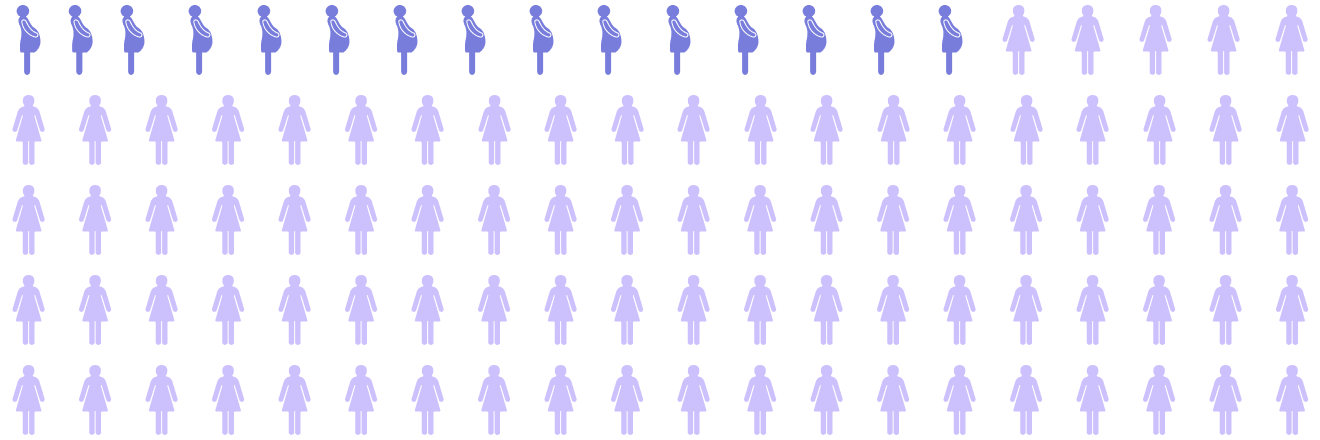
Using combined pills, typically 9 in 100 will get pregnant in one year.

Using patches, typically 9 in 100 will get pregnant in one year.

Using vaginal rings, typically 9 in 100 will get pregnant in one year.

Using diaphragms, typically 12 in 100 will get pregnant in one year.
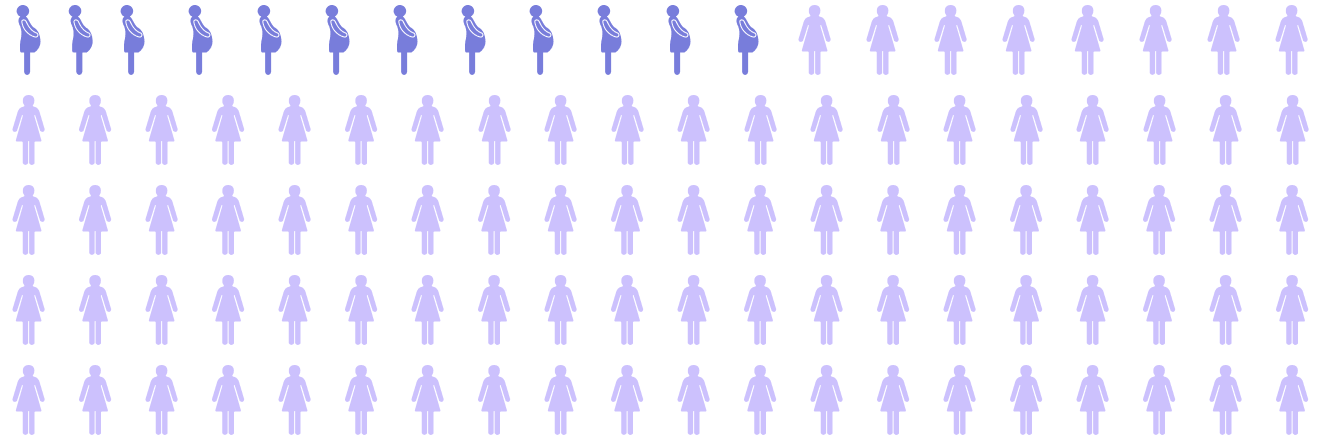
Using fertility awareness, typically 24 in 100 will get pregnant in one year.
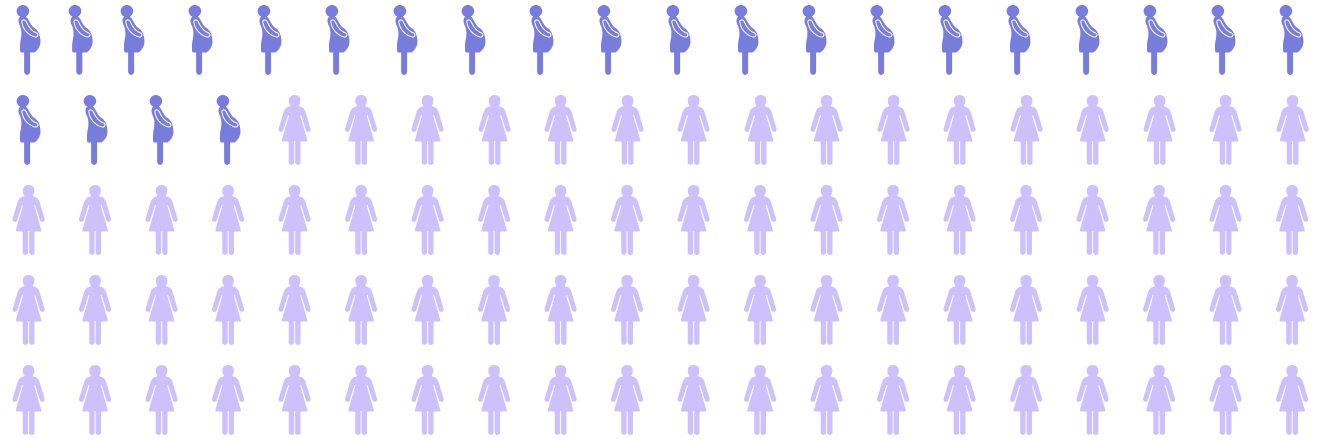
Using the withdrawal method, typically 22 in 100 will get pregnant in one year.
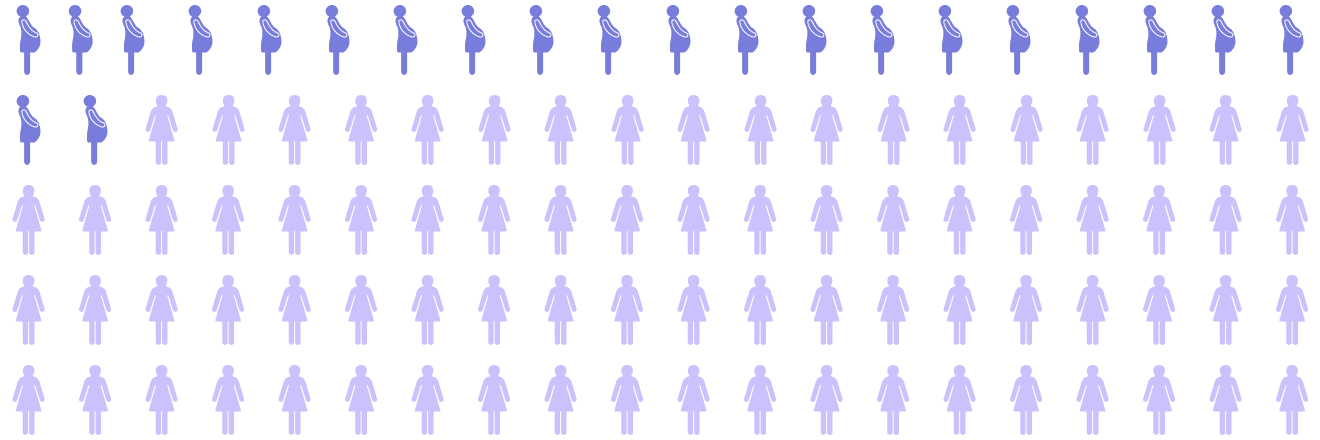
Frequently Asked Questions

How can I have lighter periods?
Most hormonal contraception is very good at making periods lighter.
The body’s hormones naturally go up and down. The hormonal methods of contraception work by levelling the ups and downs, and by stopping an egg being released (ovulation). The hormones in contraception are very similar to the body’s natural hormones, but the levels are steady instead of up and down. The steady level of hormones usually means that period bleeding is lighter, and also less painful.
The implant, pills, patches, and the ring are all ‘low dose’ methods. The lowest hormone level of all the methods is the IUS (hormonal coil) which is released into the womb slowly over 5 years.
Recommended methods:
Can I control when I have a period?
There’s no need to have a period every month – on the pill, patch or ring it’s easy to control when a period comes, by taking the method continuously without a break. A period will come when you stop the method (for a week).
You can decide when a bleed will happen, and can also take the pill, patch or ring continuously to temporarily stop your periods.
It’s safe to use two or three pill packets back to back to delay a period, going straight from one packet on to the next with no break (or changing the patch once a week with no break, or using the vaginal ring continuously).
The Combined Pill, The Patch and The Vaginal Ring are best for controlling when periods come, since these contain the hormone oestrogen.
Recommended methods:
How can I stop my periods?
Hormonal contraception makes it possible to have no periods at all.
Some methods are quite likely to stop periods so there is no bleeding at all, or only occasional light bleeding. The best method to stop periods is the Injection. Almost half of users (47%) will have no periods after a year of using the injection. The implant can also cause a pause in periods – periods will stop for about one in five users, and more than half have bleeding which is light and less frequent. Implant.
Periods can be delayed by using the The Combined Pill, The Patch or The Vaginal Ring continuously. So for example you can choose to have a period once every three months only.
It is safe, and there is no harm to future fertility in having a break from periods. When there is no period, the lining of the womb stays thin – blood doesn’t build up inside the body. There are some benefits to stopping periods – less bleeding helps to save iron (many people are anaemic because of their periods). Once the contraception is stopped, the body returns to it’s normal cycle. Periods.
Having no periods on contraception is a temporary effect which is completely reversible, and makes no difference to future fertility – having no bleeding does not affect the chance of getting pregnant in future. All of the methods are very quickly reversible (except the injection – it can take a few months to get periods back again).
Recommended methods:
Which methods can make breasts bigger?
The Combined Pill, The Patch or The Vaginal Ring can make breasts bigger, since these contain the hormone oestrogen.
Oestrogen can make breasts feel tender and swollen, particularly at first.
Recommended methods:
How can I treat Premenstrual Syndrome?
Premenstrual Syndrome is shortened to PMS. It’s also known as PMT (premenstrual tension).
The body’s hormones naturally go up and down. There’s a lot more progesterone in the week before a period, and that can cause pre-menstrual symptoms like bad moods and hunger. Hormonal contraception works by levelling out hormones, and so can be ideal for reducing PMS/PMT.
Some people get mood changes when they are not on hormonal contraception, and some get mood changes when they are on hormonal contraception. Often swapping to a different method solves the problem (e.g. choosing a different brand of pill)
These methods can help with PMS:
Recommended methods:
Which methods are the easiest to keep secret?
The Injection
The injection is the most invisible – there might be a tiny plaster put over the injection place (usually on the bum), but that’s all.
The Implant
The implant is on the inside of the arm, just under the skin – sometimes there is a small scar where it’s gone in, and you can sometimes see the outline of it if you have slim arms. In people with darker skin, a visible line can develop where the implant is resting. Since it’s on the inside of the arm, the implant is discreet.
Coils (IUD/IUS)
Coils are put into the womb, so cannot be seen. Occasionally a partner can feel the thin string of a coil during sex, and if this happens, it can be cut short so they don’t feel it.
Recommended methods:
Which methods are best at preventing pregnancy?
Nearly half of all pregnancies are unplanned (45%) – but that doesn’t necessarily mean that they are unwanted.
- If an unplanned pregnancy would be a big concern, the implant, the injection, the IUS and the IUD are the best at preventing pregnancies. Because they are long acting, you don't need to remember to use them every day
- As long as they're taken correctly, the combined pill, the patch, the contraceptive ring, and the mini pill are also great at preventing pregnancies
- If you want to delay getting pregnant, but want to get pregnant within a few months, the combined pill, the patch, the contracepive ring, and the progestogen only pill might be suitable as they come out of the body's system very soon after they are stopped, meaning that levels of fertility return to normal very quickly and might help with planning or delaying getting pregnant
- If pregnancy could be a happy accident, condoms, the diaphragm, fertility awareness and withdrawal are generally less effective methods of contraception, and so could be suitable
- Currently, contraceptive options for men are limited to condoms, withdrawal, or sterilisation (which is permanent). An unplanned pregnancy can cause stress for both both partners, and using contraception such as condoms is a way for men to have control over when they become a father. Men can talk to their partners about when they would like to have a baby, and ask them about preferred methods of contraception
Recommended methods:
Contraception and breastfeeding
Do I need contraception if I’m breastfeeding?
Breastfeeding can help to delay when you start ovulating and having periods again after giving birth.
Breastfeeding can help to prevent pregnancy on three conditions:
- If your baby is less than six months old
- If you’re fully breastfeeding (only giving your baby breast milk)
- If you haven’t had your first period since giving birth
Breast feeding can be 98% effective in preventing pregnancy if all three conditions apply. But the risk of pregnancy becomes higher:
- if you are breastfeeding less often
- if there are long intervals between feeds during the day or night
- if the baby is having other liquids as well as your breast milk
- if your periods return
Once your baby is more than 6 months old, you will need to use another contraceptive method even if you are fully breastfeeding and haven’t had a period.
Which methods are safe if I’m breastfeeding?
The contraceptive implant, injection, progestogen-only pill, IUD, IUS and condoms are safe if you are breastfeeding. If you’re using a hormonal method of contraception, a very small amount of hormone will enter the milk, but this has not been shown to be harmful to breastfed babies.
Emergency contraception (IUD and emergency pills) are safe when breastfeeding. If you use the IUD or emergency pill containing levonorgestrel you can continue to breastfeed normally. If you use the emergency pill containing ulipristal acetate (ellaOne®) you should not breastfeed for one week after taking it. During this week you should express and discard your breast milk, because the effects of ellaOne® on breastfed babies have not been studied.
Which methods are not suitable?
The combined pill, contraceptive patch and vaginal ring may make it harder for your milk to come in (because they contain the hormone oestrogen). So if you’re breastfeeding, it’s best to wait until your baby is six weeks old before starting one of these methods.
Fertility awareness methods are less reliable while breastfeeding because it is difficult to identify the signs of fertility. You should have 3 normal, regular periods before using fertility awareness methods, and this is unlikely to happen in the first 6 months after giving birth if you are breastfeeding.
Recommended methods:
Contraception after having a baby
Many unplanned pregnancies happen soon after having a baby.
How soon is it possible to get pregnant again?
You can get pregnant as soon as 21 days after having a baby. It is possible to get pregnant before you have your first period and if you’re breastfeeding.
Which methods can be started immediately after having a baby
The contraceptive implant, injection, progestogen-only pill and condoms can be started immediately after having a baby.
The IUD and IUS (coils) can be fitted at the time of a caesarean section or immediately after a vaginal birth. If they are not fitted within the first 48 hours, fitting should be at least four weeks after giving birth.
Emergency oral contraception (Emergency pills) are safe after having a baby but are not needed until 21 days after birth. All oral Emergency Contraception can be used after 21 days and the IUD can be inserted 28 days after birth. Emergency Contraception containing Levonorgestrel is not known to be harmful when breastfeeding.
Which methods are not suitable after having a baby?
The combined pill, contraceptive patch and vaginal ring should not be used in the first 3 weeks after having a baby. This is because the risk of blood clots is higher after giving birth. Those who have had uncomplicated births, with no risk factors for blood clots and who are not breastfeeding may be able to start as early as 21 days following birth. However, if you are at increased risk of blood clots, you may be advised to wait 6 weeks before starting one of these methods. Speak to your doctor or nurse who can advise you.
The diaphragm is not recommended in the first 6 weeks because the cervix (neck of the womb) and vagina change shape and size during pregnancy and birth. These changes make the diaphragm less good at preventing pregnancy.
Fertility awareness methods are less reliable after giving birth because it is difficult to identify signs of fertility. You should have 3 normal, regular periods before using fertility awareness methods.
How long should I wait before getting pregnant again after having a baby?
The advice is to ideally wait for 24 months, or at least 12 months, before becoming pregnant again. This is because if you get pregnant again quickly, the next baby might be too small, or be born too soon.
Leaflet: Contraception after having your baby
Recommended methods:

How does MyPillCheck work?
MyPillCheck provides a platform for managing your medications, including reminders, refills, and health monitoring tools.
Is there a cost to use MyPillCheck?
MyPillCheck provides a platform for managing your medications, including reminders, refills, and health monitoring tools.
Can I use MyPillCheck for multiple medications?
MyPillCheck provides a platform for managing your medications, including reminders, refills, and health monitoring tools.
How do I set up reminders?
MyPillCheck provides a platform for managing your medications, including reminders, refills, and health monitoring tools.
Can I use MyPillCheck for multiple medications?
MyPillCheck provides a platform for managing your medications, including reminders, refills, and health monitoring tools.
Where do I Search for Products?
MyPillCheck provides a platform for managing your medications, including reminders, refills, and health monitoring tools.
What are Our Patients Saying?

There are many variations of passages of Lorem Ipsum available, but the majority have suffered alteration in some form, by injected humour
Cody Fisher


There are many variations of passages of Lorem Ipsum available, but the majority have suffered alteration in some form, by injected humour
Darlene Robertson


There are many variations of passages of Lorem Ipsum available, but the majority have suffered alteration in some form, by injected humour
Marvin McKinney


There are many variations of passages of Lorem Ipsum available, but the majority have suffered alteration in some form, by injected humour
Cody Fisher
